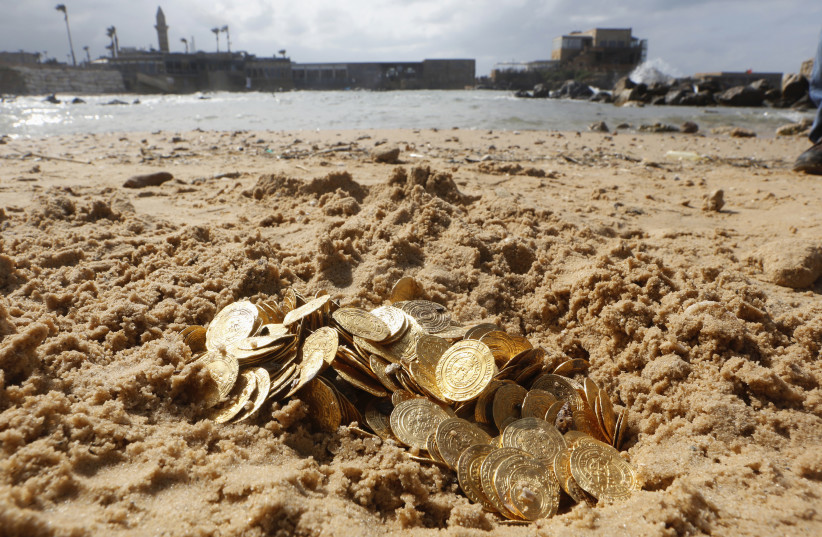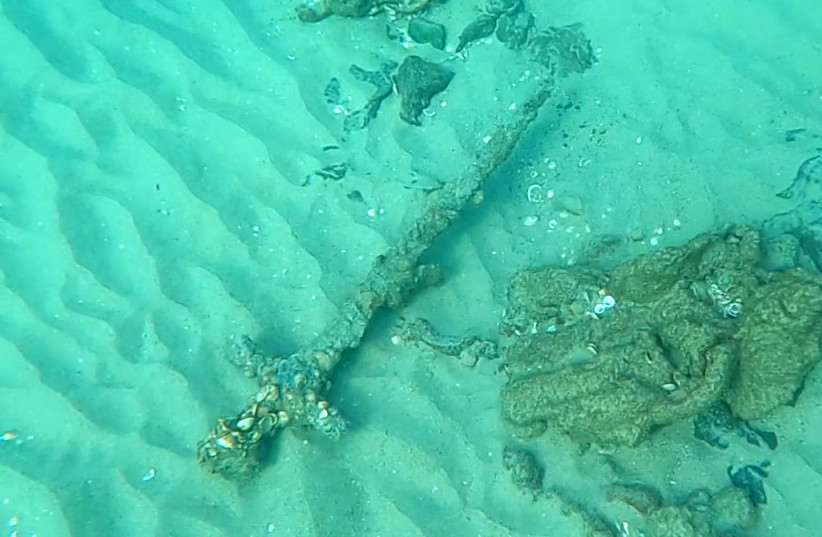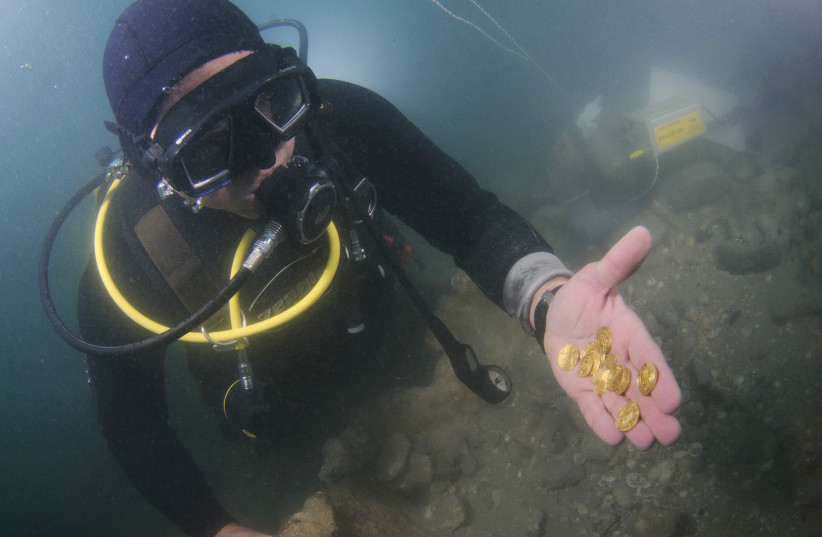In December 2010, a once-in-a-century storm swept the eastern Mediterranean. Incredibly strong winds and waves as high as 17 meters hit Israel, causing a considerable amount of damage and important changes to its coastline.
For all the problems that the storm caused above sea level though, it also had a deep impact on the underwater landscape, with huge quantities of sand disappearing or shifting.
This development initiated one of the longest and most prolific periods in Israeli marine archaeology, to the point that new discoveries made possible by that event over a decade ago are still happening today, as noted by Jacob Sharvit, director of the Marine Archaeology Unit at the Israel Antiquities Authority.
“For example, many new areas in the waters by Caesarea emerged from the sand and were exposed by the storm, which allowed us to find several shipwrecks around the site and the harbor,” he said.
First established in the fourth century BCE, Herod selected Caesarea as the place he wanted to build a port city in the first century. The city remained an important center throughout Roman and Byzantine times.
Today, Caesarea is one of the richest archaeological sites in Israel, presenting remains including a theater, a hippodrome, an aqueduct and a synagogue, as well as the port itself, whose waters have given back countless treasures, including the largest hoard of gold coins ever uncovered in the region.
“It was something really unique: 7.5 kg of gold in a great state of preservation,” Sharvit recalled.
The coins were first spotted by a group of divers, who alerted the IAA, whose experts were able to identify some 2,000 coins of different denominations dating back some 1,000 years. The most ancient was a quarter dinar minted in Palermo, Sicily, in the second half of the ninth century CE. Most of the artifacts belonged to the era of Fatimid caliphs Al-Hākim (996–1021 CE) and his son Al-Zāhir (1021–1036), and were minted in Egypt and North Africa.
According to IAA experts, the coins could have traveled on a boat returning from Egypt, transporting the taxes collected there to the caliph.
“THE COAST of Israel is a bridge between east and west and north and south,” Sharvit said. “Ships have been sailing along this coast over the course of history, and sometimes unfortunately they sank, especially during storms or as they were entering shallow waters to reach the shore.”
According to the expert, the thick layer of sand brought to the area from the Nile has helped preserve archaeological remains and artifacts by keeping them buried for centuries before they resurfaced.
“This protected them from the eyes of the public and prevented them from being stolen,” he noted. “In addition, it created an anaerobic environment which kept them much better than if they had been exposed to higher levels of oxygen.”
The sands protected the gold as well as the Crusader sword that was recently found off the Carmel coast by a diver and revealed to the public by the IAA on Monday.
“We are hoping to identify more artifacts from the time because the area witnessed much of the history of the Crusades – and Christian and Muslim troops were constantly fighting – but the fact that this is the first time we find a sword also tells us that whoever won was careful to retrieve the belonging of the defeated, especially metal objects,” Sharvit said.
The site where the sword was unearthed has also been revealed by a storm, and the IAA has been monitoring it since June.
“We already found pieces of amphorae and anchors; we are planning to go back using different technologies and metal detectors to scan the area,” Sharvit noted.
COUNTLESS IMPORTANT shipwrecks have also been identified off Israel’s coast, dating back thousands of years, or to more recent period, such as in the case of a huge ship from the Ottoman period found in Akko’s waters around ten years ago, about 34 meters long and eight meters wide.
Another iconic shipwreck was uncovered some 30 years ago near Kibbutz Ma’agan Michael: a well-preserved Roman boat from the fifth century.
“A team from the University of Haifa even built an exact replica of it,” Sharvit said.
In the past few years, another shipwreck from the eighth century CE was found in the very same area: a 25-meter-long ship that sank just a few dozen meters from the coast, whose plentiful cargo included 103 amphorae filled with all forms of agricultural products, numerous daily objects used by the crew and several Greek and Arabic inscriptions, offering a very unique testimony of the period of transition between the Byzantine and Muslim rule in the region.
Finally, underwater remains offer very important insights into prehistoric life in Israel.
“Around 8,000 years ago, the sea level was around 15 meters lower than today, and this means that prehistoric populations were building villages on the coast that today are submerged,” Sharvit remarked.
The most prominent village identified so far is known as Atlit Yam in northern Israel, where marine archaeologists identified a number of circular installations made of heated mud bricks as well as several other artifacts and remains showing the evolution of the skills and knowledge of its residents. The village was first discovered in the 1960s and continues to be excavated today.
From Caesarea to the Carmel Coast, the work of marine archaeologists continues and always reveals new surprises, Sharvit concluded.
“The 2010 storm was a major one, but every winter, regular storms shift the sands and new sites emerge,” he said. “It is never boring.”



